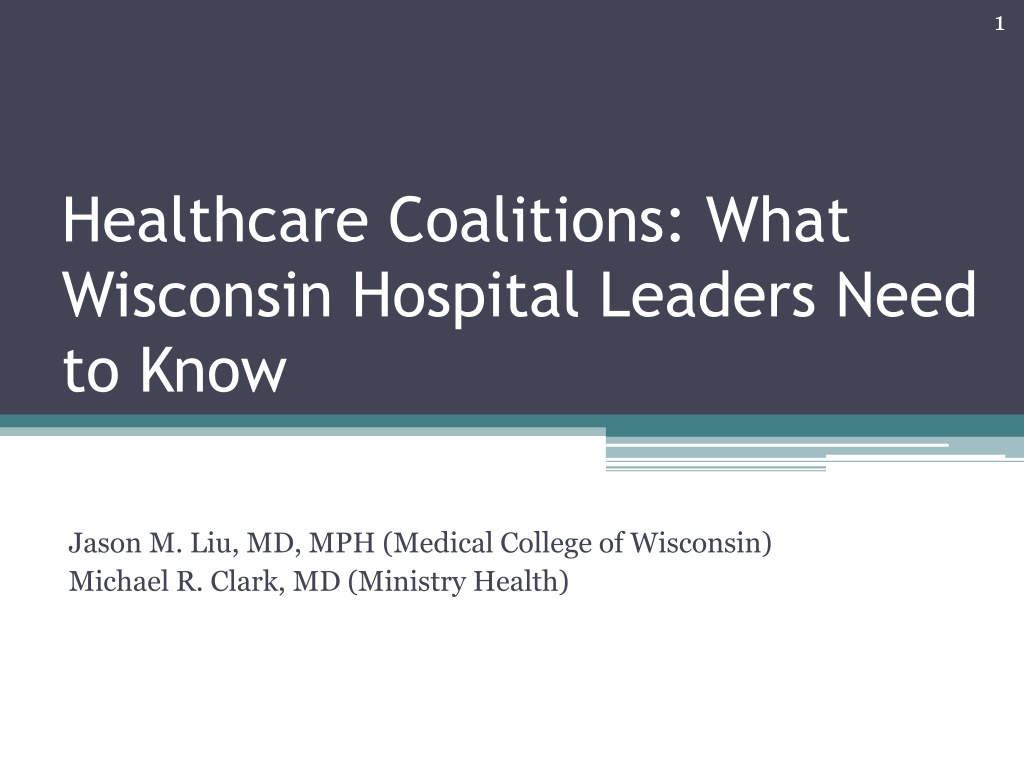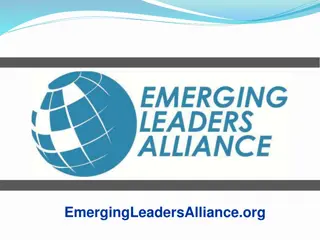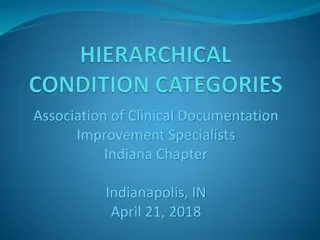
Healthcare Coalitions: Advantages for Wisconsin Hospital Leaders
This presentation highlights the importance of healthcare coalitions for Wisconsin hospital leaders, focusing on the role of the Wisconsin Hospital Emergency Preparedness Program (WHEPP). It discusses the benefits of joining healthcare coalitions, the need for regional collaboration, and how hospital leaders can support and enhance emergency preparedness efforts. By understanding and actively participating in healthcare coalitions, hospital leaders can strengthen their emergency response capabilities and better serve their communities during times of crisis.
Download Presentation

Please find below an Image/Link to download the presentation.
The content on the website is provided AS IS for your information and personal use only. It may not be sold, licensed, or shared on other websites without obtaining consent from the author. Download presentation by click this link. If you encounter any issues during the download, it is possible that the publisher has removed the file from their server.
E N D
Presentation Transcript
1 Healthcare Coalitions: What Wisconsin Hospital Leaders Need to Know Jason M. Liu, MD, MPH (Medical College of Wisconsin) Michael R. Clark, MD (Ministry Health)
2 Outline Background WHEPP Healthcare Coalitions Overview Advantages for Hospitals Medical Coordination Centers Next Steps for Wisconsin HCC Regions How a Hospital Leader Can Help
3 Background - Wisconsin Hospital Emergency Preparedness Program (WHEPP) Supports hospital emergency preparedness planning and response Over last 11 years, provided millions of dollars to hospitals and healthcare systems for emergency preparedness Funded by the Office of the Assistant Secretary for Preparedness and Response (ASPR) in the U.S. Department of Health and Human Services; grants administered by the Wisconsin Department of Health Services Federal grant guidelines for hospital preparedness programs require formation of regional healthcare coalitions (HCCs)
4 HCCs - Overview Group of healthcare organizations, public safety and public health partners that join forces for the common goal of uniform and unified response to a medical surge emergency Support communities before, during, and after disasters and other health-related crises Development is required as condition of continued funding through hospital preparedness programs
5 HCCs Overview (cont d) Historical focus on planning and education (WHEPP) will shift to include response and recovery Meant to assist with large-scale or unusual emergencies Does not replace or supplant day-to-day functioning/activities of individual organizations or disciplines Locally driven, bottom-up approach Each level decides when to activate the next level Individual healthcare organization -> Area -> Region -> Statewide
6 HCCs Advantages for Hospitals HCCs may help in meeting certain regulatory requirements Joint Commission Medicare Condition of Participation related to emergency preparedness Provide tools/templates, content experts, or other resources to assess and meet compliance and operational goals Gateway to all partners involved in a healthcare emergency/special incident Coordinate regional healthcare plans for large-scale disasters Reach and coordinate with other healthcare organizations and other stakeholders more efficiently One stop shop offloads burden of a single organization having to contact each partner by itself
7 HCCs Advantages for Hospitals (cont d) Provides enhanced response and treatment resources Coordinated distribution of patients to reduce chance of disproportionate surges on any single organization Easier access to knowledge resources regional and state experts, etc. Easier access to physical resources bed space, equipment, supplies, medications, etc. Indicators for and uniform deployment of crisis standards of care Streamlined information flow Reduces information overload and ensures relevance/utility for organization Promotes uniform message across region to reduce confusion/conflicting information Offload burden of collecting/sorting information from single organization Uniform method to collect available information to provide an accurate situational picture
8 Medical Coordination Centers Serve as the response arm of the HCCs HCC-run entities Collate and disseminate information Offer coordination and technical assistance during a disaster Types of Coordination Hospital beds Patient Movement Specialty Equipment
9 Next Steps for Wisconsin Establish seven regional HCCs by July 1, 2015 Engage potential partners Develop regional governance structures Set regional goals and objectives
10 HCC Regions Bayfield Regions to be based on the current WHEPP regions. Douglas Iron Ashland Vilas Washburn Florence Sawyer Burnett Oneida Price Forest Marinette Barron Rusk Polk Lincoln Langlade Taylor St. Croix Chippewa Menomonee Marathon Oconto Oconto Dunn Pierce Door Clark Shawano Eau Claire Pepin Kewaunee Waupaca Portage Buffalo Outagamie Trempealeau OutagamieBrown Wood Jackson Manitowoc Winnebago Waushara Adams Calumet Monroe La Crosse Green Lake Marquette Juneau Sheboygan Fond du Lac Vernon Dodge Sauk Washington Columbia Richland Crawford Ozaukee Dane Jefferson Waukesha Iowa Milwaukee Grant Racine Rock Green Walworth LaFayette Kenosha
11 How a Hospital Leader Can Help Support internal and external emergency planning Strengthen partnerships with other healthcare, public health, and public safety organizations Institutional approval/support of staff to work on plans Participation in exercises Encourage familiarity with preparedness and Incident Command System at all levels of organization Mobilize organizational resources in planning and response
12 How a Hospital Leader Can Help Support HCC development Support of multi-disciplinary, multi-organizational HCC concept and development Hospital/hospital system participation Outreach to partners Provide administrative/business expertise to coalitions Support of information sharing Situational awareness Current capacity/capabilities Resources available
13 Questions? DHSHCC@wisconsin.gov






















